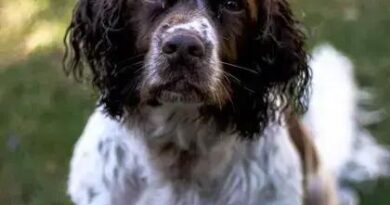What is History of breeds
What is the History of Breeds?
The history of dog breeds is a fascinating journey that spans thousands of years, showcasing the intricate relationship between humans and canines. From the early domestication of wolves to the diverse array of breeds we see today, this history reflects not only the evolution of dogs but also the changing needs and lifestyles of human societies. Understanding this history provides insight into the characteristics, behaviors, and roles that different breeds have played throughout time.
Early Domestication and Ancestral Roots
The domestication of dogs is believed to have occurred between 20,000 and 40,000 years ago, when prehistoric humans began to form bonds with wolves. These early interactions likely revolved around hunting and protection, leading to a mutualistic relationship that laid the groundwork for future breeding. Over generations, humans selectively bred wolves that exhibited desirable traits, such as tameness and sociability, eventually leading to the emergence of the first dog breeds.
Development of Distinct Breeds
As human societies evolved, so did the roles of dogs. Different breeds began to emerge, each developed for specific tasks such as herding, hunting, guarding, or companionship. For instance, the Greyhound was bred for speed in hunting, while the Border Collie was developed for herding livestock. This specialization not only enhanced the utility of dogs but also contributed to the vast genetic diversity we see in dog breeds today.
Influence of Geography and Culture
The geographical distribution of dog breeds is heavily influenced by cultural practices and environmental factors. For example, the Arctic breeds, such as the Siberian Husky, were developed in cold climates for sledding and survival, while breeds like the Basenji originated in Africa, adapted to hunting in dense forests. These regional adaptations highlight how different cultures shaped the development of breeds to meet their unique needs.
Formal Recognition and Breed Standards
In the 19th century, the formal recognition of dog breeds began to take shape with the establishment of kennel clubs and breed standards. The first dog show, held in England in 1859, marked a significant milestone in the history of breeds, as it provided a platform for breeders to showcase their dogs and adhere to specific standards. This formalization led to the classification of breeds and the establishment of guidelines for breeding practices, further influencing the evolution of dog breeds.
Modern Breeding Practices
Today, dog breeding practices have evolved significantly, with a focus on both aesthetics and functionality. Responsible breeders prioritize health, temperament, and adherence to breed standards, while also considering the genetic diversity necessary to prevent inherited health issues. However, the rise of designer breeds and unethical breeding practices has raised concerns about the welfare of dogs, prompting discussions about responsible ownership and breeding ethics.
Impact of Technology on Breeding
Advancements in technology have also played a crucial role in the history of dog breeds. Genetic testing and artificial insemination have revolutionized breeding practices, allowing breeders to make informed decisions about lineage and health. These technologies not only enhance the breeding process but also contribute to the preservation of rare breeds and the reduction of genetic disorders, ensuring a healthier future for dogs.
Preservation of Rare Breeds
As some dog breeds face the threat of extinction due to changing societal preferences and breeding practices, efforts to preserve rare breeds have gained momentum. Organizations dedicated to breed preservation work tirelessly to maintain genetic diversity and promote awareness about the importance of these breeds. This preservation not only safeguards the unique traits of these dogs but also enriches the overall tapestry of canine history.
The Role of Dogs in Society
The history of dog breeds is not just about genetics; it also reflects the evolving roles of dogs in human society. From working dogs that assist in various tasks to therapy and service dogs that provide emotional support, the bond between humans and dogs continues to deepen. Understanding this history allows us to appreciate the invaluable contributions of dogs to our lives and the responsibilities that come with dog ownership.


